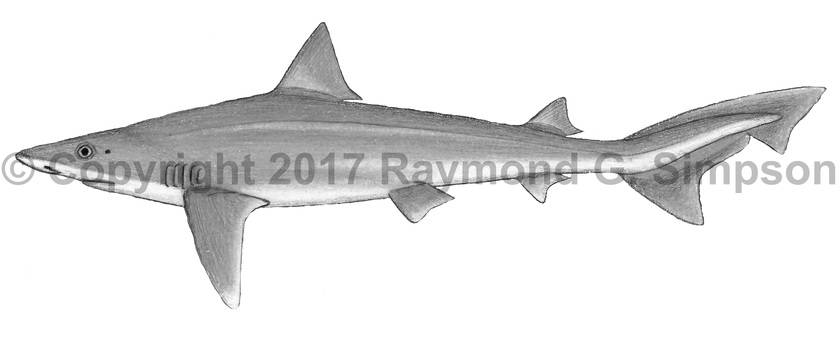
Common Name
Soupfin Shark
Year Described
Linnaeus, 1758
Identification
A medium-sized and slender shark with two small dorsal fins. Mouth with equal sized labial furrows. Teeth small with a single strong, oblique cusp and several small cusplets adjacent to it. Upper tooth rows: 36 rows. Lower tooth rows: 34 rows. Eye large with a small spiracle. Nostril with tiny projecting tabs. Dorsal fins lack spines. Second dorsal fin small; about a third as high as the first. First dorsal origin behind rear free tip of pectoral fin. Second dorsal fin origin almost directly over anal fin origin. Pectoral fin angular and pointed. Pelvic fin larger than anal and second dorsal fin. No precaudal pits. Caudal fin lower lobe very long and pointed. Upper caudal fin lobe broad with a prominent tab. Skin with overlapping *tri-pointed (blunt tips) denticles with 3 ridges.
Color
Body uniformly gray to gray-brown above grading to pure white or cream below. No spots or markings on body.
Size
Maximum size to 190cm TL. Mature adults range from 144-150cm TL.
Habitat
Usually found in shallow temperate coastal waters less than 40m. The deepest known specimens taken at 550m. Populations undergo seasonal migrations.
Range
Known from southern Brazil to Argentina. Not known from the northwestern Atlantic despite being found almost worldwide elsewhere.
References
Castro, J.I. 2011. The Sharks of North America. Oxford University Press, 640 pp.
Compagno, L., M. Dando, and S. Fowler. 2005. Sharks of the World. Princeton University Press, 480 pp.